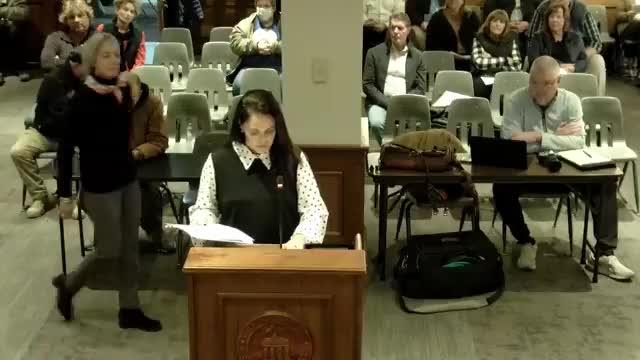United Way tells Quincy council housing, behavioral health and poverty remain top local priorities
January 06, 2025 | Quincy City, Adams County, Illinois
This article was created by AI summarizing key points discussed. AI makes mistakes, so for full details and context, please refer to the video of the full meeting. Please report any errors so we can fix them. Report an error »

United Way of Adams County presented its 2024 community needs assessment to the Quincy City Council and told members that housing, behavioral health and poverty remain the top priorities for the county. Jenna, speaking for United Way, said the report draws on more than 100 data points and several years of local partnership work.
The assessment highlights that 27% of Adams County residents meet the "ALICE" definition (asset limited, income constrained, employed), and an additional 12% live in poverty, meaning almost 40% of county households struggle to meet basic needs, Jenna said. She told the council the United Way’s community-building council has three working teams — housing, behavioral health and poverty — that meet regularly to set goals and coordinate services.
Jenna said the behavioral-health team created a decision tree to guide people in crisis to appropriate care and that the United Way has produced a local financial-resource guide and updated its website with links to services. The agency also runs direct programs such as the Dolly Parton Imagination Library, chairs the local VOAD (Volunteer Organizations Active in Disaster) and operates the locally run helpline used by area residents.
The United Way asked council members to consider attending the community-building council’s quarterly meeting on March 13 at 10:30 a.m. at the United Way office to hear updates and ask questions. Jenna said the agency will publish an online copy of the full assessment in February and invited city staff and council members to use the data when planning services and budgets.
Jenna said many ALICE households are working but remain vulnerable to small financial shocks, and that nearly three-quarters of ALICE households are single-female‑headed households with children. She urged continued coordination among the city, county, health partners and more than 30 nonprofit agencies engaged through United Way teams.
The presentation closed with offers from United Way staff to brief service clubs, agencies or city departments and with an invitation to collaborate on steps the city and partners can take to reduce those needs over time.
The assessment highlights that 27% of Adams County residents meet the "ALICE" definition (asset limited, income constrained, employed), and an additional 12% live in poverty, meaning almost 40% of county households struggle to meet basic needs, Jenna said. She told the council the United Way’s community-building council has three working teams — housing, behavioral health and poverty — that meet regularly to set goals and coordinate services.
Jenna said the behavioral-health team created a decision tree to guide people in crisis to appropriate care and that the United Way has produced a local financial-resource guide and updated its website with links to services. The agency also runs direct programs such as the Dolly Parton Imagination Library, chairs the local VOAD (Volunteer Organizations Active in Disaster) and operates the locally run helpline used by area residents.
The United Way asked council members to consider attending the community-building council’s quarterly meeting on March 13 at 10:30 a.m. at the United Way office to hear updates and ask questions. Jenna said the agency will publish an online copy of the full assessment in February and invited city staff and council members to use the data when planning services and budgets.
Jenna said many ALICE households are working but remain vulnerable to small financial shocks, and that nearly three-quarters of ALICE households are single-female‑headed households with children. She urged continued coordination among the city, county, health partners and more than 30 nonprofit agencies engaged through United Way teams.
The presentation closed with offers from United Way staff to brief service clubs, agencies or city departments and with an invitation to collaborate on steps the city and partners can take to reduce those needs over time.
View full meeting
This article is based on a recent meeting—watch the full video and explore the complete transcript for deeper insights into the discussion.
View full meeting
